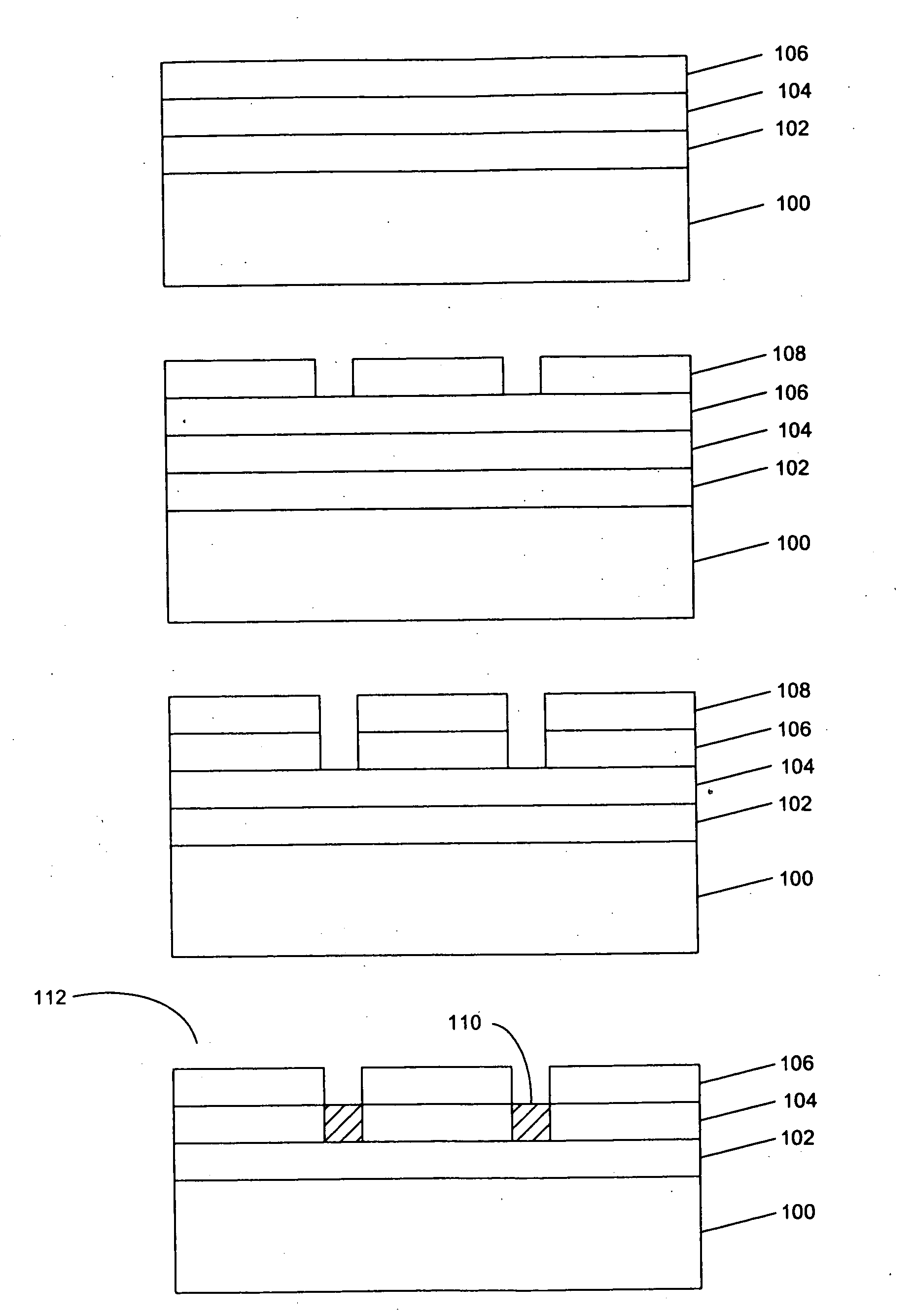Nanostructured titania
a nanostructured titania and nano-structure technology, applied in the direction of solid-state diffusion coating, instruments, transportation and packaging, etc., can solve the problems of poor yield, lowering process yield, and other methods used with this method are not compatible with high-volume semiconductor manufacturing processes, so as to achieve high edge acuity and better edge acuity
- Summary
- Abstract
- Description
- Claims
- Application Information
AI Technical Summary
Benefits of technology
Problems solved by technology
Method used
Image
Examples
Embodiment Construction
[0032]In the following description, reference is made to the accompanying drawings which form a part hereof, and which is shown, by way of illustration, several embodiments of the present invention. It is understood that other embodiments may be utilized and structural changes may be made without departing from the scope of the present invention.
Overview and Related Publications Incorporated by Reference
[0033]The present invention relates to formation of nanostructured titania (NST) from patterned Ti films. To prove the effectiveness of patterning to reduce and eliminate crack formation, NST was also formed on blanket (unpatterned) Ti films.
[0034]Additional description of the process for fabricating crack fee nanostructured titania (NST, or ns-titania) is found in Appendices A-H of provisional patent application Ser. No. 60 / 667,667, the disclosure and appendices of which are an integral part of this application and which are also hereby incorporated herein by reference.
Experimental ...
PUM
| Property | Measurement | Unit |
|---|---|---|
| diameter | aaaaa | aaaaa |
| sizes | aaaaa | aaaaa |
| pressure | aaaaa | aaaaa |
Abstract
Description
Claims
Application Information
 Login to View More
Login to View More - R&D
- Intellectual Property
- Life Sciences
- Materials
- Tech Scout
- Unparalleled Data Quality
- Higher Quality Content
- 60% Fewer Hallucinations
Browse by: Latest US Patents, China's latest patents, Technical Efficacy Thesaurus, Application Domain, Technology Topic, Popular Technical Reports.
© 2025 PatSnap. All rights reserved.Legal|Privacy policy|Modern Slavery Act Transparency Statement|Sitemap|About US| Contact US: help@patsnap.com



